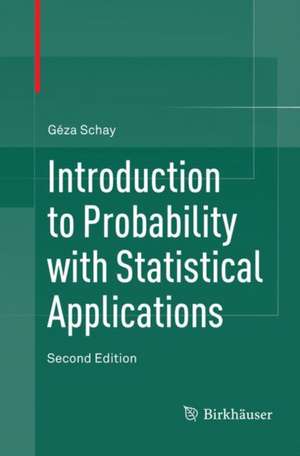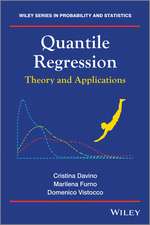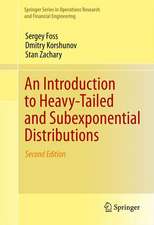Introduction to Probability with Statistical Applications
Autor Géza Schayen Limba Engleză Paperback – 7 iun 2018
Key features in new edition:
* 35 new exercises
* Expanded section on the algebra of sets * Expanded chapters on probabilities to include more classical examples
* New section on regression
* Online instructors' manual containing solutions to all exercises<
Advanced undergraduate and graduate students in computer science, engineering, and other natural and social sciences with only a basic background in calculus will benefit from this introductory text balancing theory with applications.
Review of the first edition:
This textbook is a classical and well-written introduction to probability theory and statistics. … the book is written ‘for an audience such as computer science students, whose mathematical background is not very strong and who do not need the detail and mathematical depth of similar books written for mathematics or statistics majors.’ … Each new concept is clearly explained and is followed by many detailed examples. … numerous examples of calculations are given and proofs are well-detailed." (Sophie Lemaire, Mathematical Reviews, Issue 2008 m)
| Toate formatele și edițiile | Preț | Express |
|---|---|---|
| Paperback (1) | 430.78 lei 38-44 zile | |
| Springer International Publishing – 7 iun 2018 | 430.78 lei 38-44 zile | |
| Hardback (1) | 516.79 lei 3-5 săpt. | |
| Springer International Publishing – 29 iun 2016 | 516.79 lei 3-5 săpt. |
Preț: 430.78 lei
Preț vechi: 531.83 lei
-19% Nou
82.43€ • 86.28$ • 68.61£
Carte tipărită la comandă
Livrare economică 27 martie-02 aprilie
Specificații
ISBN-10: 3319808524
Pagini: 385
Ilustrații: XII, 385 p. 49 illus.
Dimensiuni: 155 x 235 mm
Ediția:Softcover reprint of the original 2nd ed. 2016
Editura: Springer International Publishing
Colecția Birkhäuser
Locul publicării:Cham, Switzerland
Cuprins
Recenzii
Notă biografică
Textul de pe ultima copertă
Key features in new edition:
* 35 new exercises * Expanded section on the algebra of sets
* Expanded chapters on probabilities to include more classical examples
* New section on regression
* Online instructors' manual containing solutions to all exercises
This textbook is a classical and well-written introduction to probability theory and statistics. … the book is written ‘for an audience such as computer science students, whose mathematical background is not very strong and who do not need the detail and mathematical depthof similar books written for mathematics or statistics majors.’ … Each new concept is clearly explained and is followed by many detailed examples. … numerous examples of calculations are given and proofs are well-detailed." (Sophie Lemaire, Mathematical Reviews, Issue 2008 m)
Caracteristici
Descriere
Now in its second edition, this textbook serves as an introduction to probability and statistics for non-mathematics majors who do not need the exhaustive detail and mathematical depth provided in more comprehensive treatments of the subject. The presentation covers the mathematical laws of random phenomena, including discrete and continuous random variables, expectation and variance, and common probability distributions such as the binomial, Poisson, and normal distributions. More classical examples such as Montmort's problem, the ballot problem, and Bertrand’s paradox are now included, along with applications such as the Maxwell-Boltzmann and Bose-Einstein distributions in physics.
Key features in new edition:
* 35 new exercises
* Expanded section on the algebra of sets * Expanded chapters on probabilities to include more classical examples
* New section on regression
* Online instructors' manual containing solutions to all exercises<
Advanced undergraduate and graduate students in computer science, engineering, and other natural and social sciences with only a basic background in calculus will benefit from this introductory text balancing theory with applications.
Review of the first edition:
This textbook is a classical and well-written introduction to probability theory and statistics. … the book is written ‘for an audience such as computer science students, whose mathematical background is not very strong and who do not need the detail and mathematical depth of similar books written for mathematics or statistics majors.’ … Each new concept is clearly explained and is followed by many detailed examples. … numerous examples of calculations are given and proofs are well-detailed." (Sophie Lemaire, Mathematical Reviews, Issue 2008 m)













